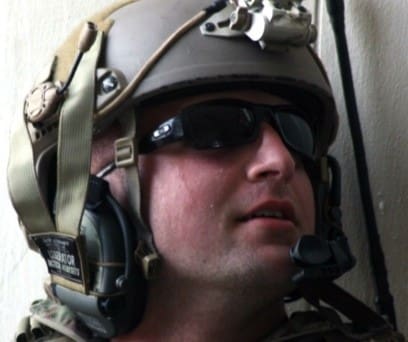 TCI has created a solution to improve comfort and convenience of wearing tactical headsets with contemporary tactical headsets. You may have noticed TCI’s solution when it was recently televised on NBC’s “Stars Earn Stripes” television series where military operatives and celebrities teamed-up to compete and earn money for public safety and military charities.
TCI has created a solution to improve comfort and convenience of wearing tactical headsets with contemporary tactical headsets. You may have noticed TCI’s solution when it was recently televised on NBC’s “Stars Earn Stripes” television series where military operatives and celebrities teamed-up to compete and earn money for public safety and military charities.
The Liberator Series Behind-the-Head (BTH) Attachment Kit works with the Ops-Core FAST, Base Jump and other high-cut tactical helmets by allowing users to attach their tactical headset directly to the helmet. It works exceptionally well with Ops-Core helmets with Occ-Dual or advanced nape support straps, while preserving valuable helmet rail space for other mission gear.
The Liberator Series Behind-the-Head (BTH) Attachment Kit was designed as a conversion kit for Liberator II and III BTH headsets to improve modularity, comfort, fit and convenience. Users can don and doff their headset and helmet simultaneously, yet quickly detach the headset from the helmet to place on another compatible helmet. Or, they can wear the headset or helmet independently.
Other attachment systems use the limited rail space of the helmet and the mounting system protrudes outside the normal width of the helmet. TCI noticed that this makes them prone to breakage and removing the headset from the helmet quickly is an endeavor. What’s more, their concern was that you couldn’t effect an expedient battlefield repair if it broke.
Get them at www.tacticalcommandstore.com



Nice, but even though it doesn’t take up any rail space, it sure covers up a lot of it….
Think about it. If that rail space were occupied this can lie OVER the accessory.
Yeah it takes of a lot of space and it doesnt look too secure. In the second picture it looks like that guy is going to take some hearing damage. It doesnt appear to have a good seal since its sitting so low.
the second shot is the guy relaxing the the velcro moved down so it’s not properly affixed. anything pressing on your ears for hours make them ache and it’s nice to be able to easily relieve that pressure.
Ok, this might be a dumb question…
Why are we building ballistic helmets with huge cutouts around the ears… and than filling in that space with off-the-shelf headsets and having to glue the whole rigamarole together with specialized kit?
Why not just build an open face helmet that covers the ears fully (for external sound deadening) and use earplugs for noise/comms? It seems like this would be a lot cleaner design, with a lot less parts to fail.
Companies like Bell and Arai have a lot of experience making relatively comfortable helmets for motor sports. I am sure the tech could cross-polinate to ballistic helmets.